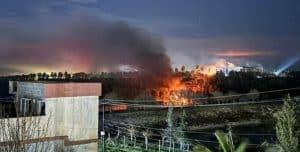PNN – Simultaneously with the Zionist regime’s aggressive attack on Iran, we are witnessing the implementation of various media tactics and techniques, such as narrative creation, fabrication, censorship, rumor-spreading, and a display of power by the regime’s media.
A week has passed since the beginning of the Zionist regime’s aggressive attacks on Iran’s territorial integrity; during this time, simultaneously with the criminal Zionist regime’s open aggression against Iran, we have witnessed its media struggle to launch psychological warfare, spread rumors, manage the narrative, and use a strategy of instilling fear and terror, sowing division, and disturbing public opinion using traditional and digital media.
Therefore, the Zionist regime uses a set of media techniques to advance its goals in the war with Iran, giving its aggressive attacks names with positive connotations such as “legitimate defense” and “the right to self-defense.”
This article depicts a series of media tactics and techniques of the Zionist regime in the midst of this regime’s aggression against Iran’s territorial integrity.
Read more:
Tel Aviv attacks on Iranian hospitals and emergency vehicles
- Spreading rumors and showing off power
In its attacks on Iran, the Zionist regime carried out a classic example of psychological bombing, which consists of spreading rumors, releasing suspicious videos, and attempting to demonstrate power. For example, on social media, dozens of fake accounts, whose roots go back to the Zionist cyber-army, claim that Iranian defense systems are ineffective and that several underground sites have been razed to the ground.
The official images released, however, do not record even a real explosion deep inside the alleged targets. In fact, this psychological operation, rather than creating a military reality, was an attempt to create anxiety in the mental structure of Iranian citizens, perhaps by weakening morale and increasing pessimism about the country’s defense capabilities, creating space for political pressure.
- Alternative and incorrect narrative creation
One of the pillars of the Zionist regime’s psychological warfare is the creation of alternative narratives. The regime knows full well that facts are not so important; rather, what people believe determines the battlefield. During the recent airstrikes on military installations in the cities of Tehran, Kermanshah, Isfahan, and Shiraz, the Zionist regime, from the very beginning, created a widespread media wave to portray the public opinion as a successful, intelligent, and precise operation; while the Iranian Ministry of Defense announced hours later that a large portion of the suicide drones had been shot down before reaching their targets. But the enemy immediately, in coordination with the New York Times and the Times of Israel, claimed that all attacks had hit sensitive military facilities. The purpose of this media deception was not to inform, but to create a sense of defeat and vulnerability in Iranian public opinion.
- Multipurpose project for mass production of fake news
The Zionist regime, along with its aggressive actions, is manipulating and falsifying news and images related to the war in the media. For example, in videos, the regime claims to have destroyed Iranian launchers; while an examination of these videos shows that the regime has produced several videos from different angles of the destruction of just one launcher and has published them separately, edited and arranged in different ways!

Therefore, the Hebrew media has opened a front by producing mass fake news against Iran. From widespread internet and electricity blackouts to claims of mass escapes of security prisoners, a range of fabricated narratives are being spread in a purposeful and organized manner. Content analysis of this news shows that many of the videos and images published either belong to events in other countries, or are distorted reprints of old events. One of the most prominent examples of this psychological warfare was the release of a video from an addiction treatment center in Iran, which was widely reposted in Hebrew media and social networks under the title “Escape of security prisoners from Tehran’s large prison.” This is despite the fact that a simple investigation could have revealed that it was fake.
- Instilling security for civilians in Iran
The Israeli aggressor regime pretends in its propaganda that it carries out its attacks carefully and without attacking residential areas, but the truth is something else. Even hospitals and patients are not safe from the Zionist regime’s aggressive attacks. These include the projectile hitting Hakim Hospital in Tehran and the targeting of an ambulance in Tehran, which resulted in the martyrdom of three paramedics. The Zionist regime attacked Farabi Hospital in Kermanshah in the very first days of the aggression.
The bitter irony of the story is that despite the bombing of hospitals, the Zionist regime’s officials and media have launched propaganda to deceive the world’s public opinion; the numerous warnings to Iranian citizens to evacuate various areas can also be analyzed in this context, and they are trying to convince the world with this move that protecting the lives of citizens and civilians is important to them.
- Instilling a sense of urgency in the regime against Iran’s aimless and scattered attacks
The Zionist regime’s media seeks to instill the impression that their attacks are precise and targeted, while Iran’s attacks are scattered and aimless; a cursory glance at the Zionist regime’s media content reveals this tactic.
The Weizmann Institute, which has been linked to the Israeli regime’s weapons research for years, was also targeted by an Iranian missile attack; an attack carried out in response to the institute’s role in developing tools that have been used against civilians.

According to the business newspaper “De Marker” affiliated with the Haaretz media group, several buildings within the institute were directly targeted, and a key laboratory complex was completely burned and destroyed.
This advanced research center operated in the fields of life sciences, artificial intelligence, and molecular biology; fields that have directly contributed to the development of the Zionist regime’s surveillance, targeting, and weapons systems, systems that have been used in the regime’s aggressions against various parts of the region.

- Censorship and secrecy
The Zionist regime has consistently shown that it exercises strict control over the flow of information by controlling media access to war zones, restricting journalists’ access to war zones, arresting a number of journalists who published images of Iranian attacks on occupied territories, and expelling foreign journalists.
The efforts to prevent the media from reporting the extent of the destruction and the number of deaths can be evaluated in this context. While Israeli government and security agencies are desperately trying to prevent the publication of casualty figures from Iranian missile attacks on the occupied territories, some sources report a high number of Zionist casualties and deaths during these attacks. In one case, the American newspaper The Washington Post reported that the number of Israeli casualties since the beginning of Iran’s missile operations exceeded 1,800.
- Escaping reality by faking the military power of the Israeli army
Hebrew media outlets publish several videos daily of alleged attacks on Iranian soil, which are often fake, fabricated, or exaggerated. For example, they proudly presented the shooting down of two old F-14 replicas in Mehrabad as the capture of Iranian fighter jets! Or they claimed that their fighter jets reached Mashhad and called this the largest air operation in the history of the world; while technically, these fighter jets cannot return from such a distance without refueling. Many operations carried out by drones or infiltrators are recorded as airstrikes to present an image of “absolute superiority.”
- Artificial Intelligence, Hashtags, and Manipulation
In the days following the attack, certain hashtags trended on Twitter, not by chance, but rather by the mobilization of robotic accounts and artificial intelligence by the Zionist cyber-army. The goal of these hashtags was to incite an all-out war, incite fear, and spread psychological instability. Cybersecurity analysts believe that more than 70% of the accounts that trended these hashtags in the early hours were inhumane in nature and aimed to falsely manage global public opinion about the severity and depth of the attacks.

